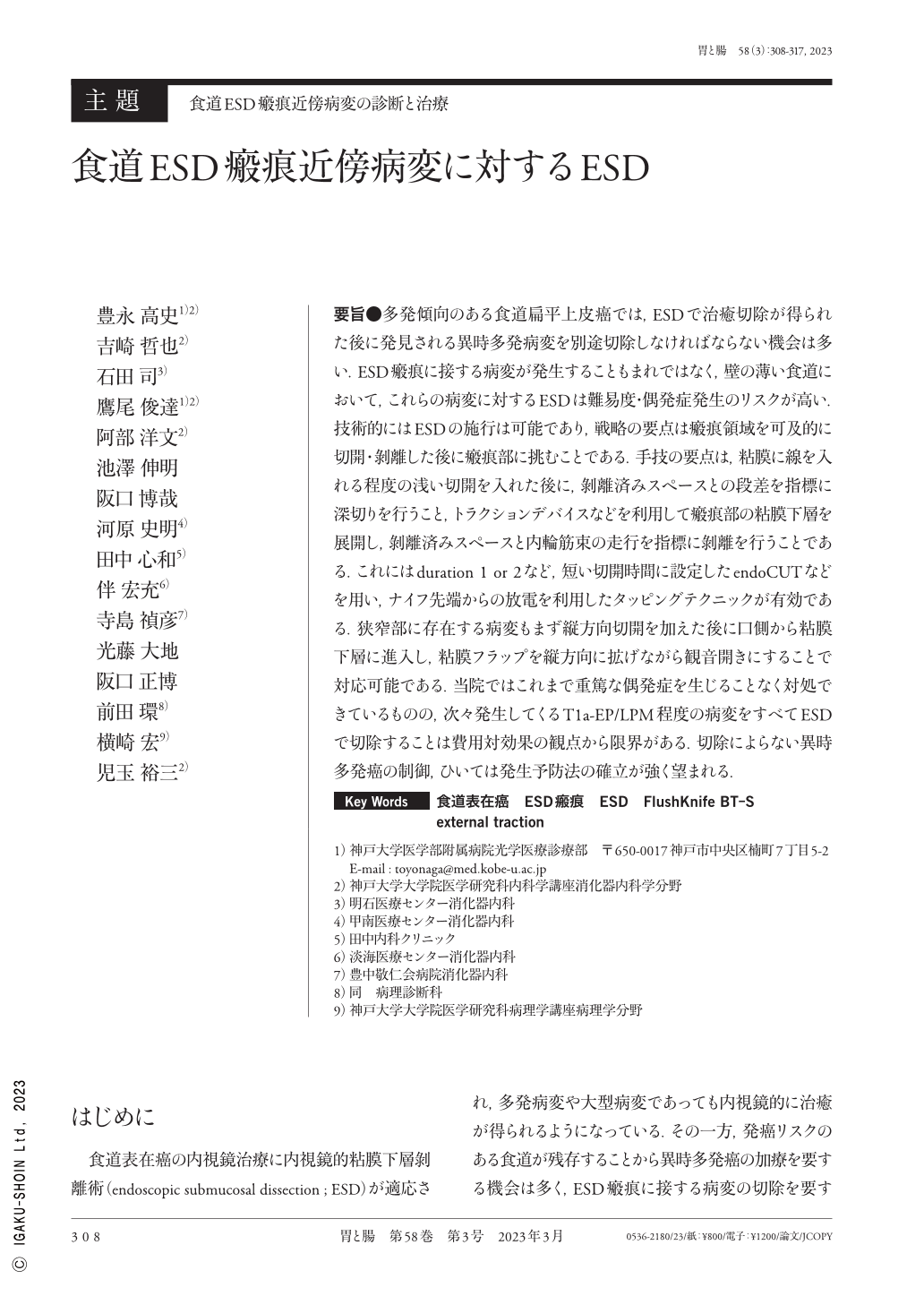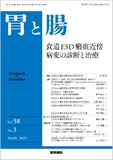Japanese
English
- 有料閲覧
- Abstract 文献概要
- 1ページ目 Look Inside
- 参考文献 Reference
要旨●多発傾向のある食道扁平上皮癌では,ESDで治癒切除が得られた後に発見される異時多発病変を別途切除しなければならない機会は多い.ESD瘢痕に接する病変が発生することもまれではなく,壁の薄い食道において,これらの病変に対するESDは難易度・偶発症発生のリスクが高い.技術的にはESDの施行は可能であり,戦略の要点は瘢痕領域を可及的に切開・剝離した後に瘢痕部に挑むことである.手技の要点は,粘膜に線を入れる程度の浅い切開を入れた後に,剝離済みスペースとの段差を指標に深切りを行うこと,トラクションデバイスなどを利用して瘢痕部の粘膜下層を展開し,剝離済みスペースと内輪筋束の走行を指標に剝離を行うことである.これにはduration 1 or 2など,短い切開時間に設定したendoCUTなどを用い,ナイフ先端からの放電を利用したタッピングテクニックが有効である.狭窄部に存在する病変もまず縦方向切開を加えた後に口側から粘膜下層に進入し,粘膜フラップを縦方向に拡げながら観音開きにすることで対応可能である.当院ではこれまで重篤な偶発症を生じることなく対処できているものの,次々発生してくるT1a-EP/LPM程度の病変をすべてESDで切除することは費用対効果の観点から限界がある.切除によらない異時多発癌の制御,ひいては発生予防法の確立が強く望まれる.
In recurring esophageal squamous cell carcinoma, a separate resection is frequently required for metachronous neoplastic lesions detected after curative resection. This separate resection involves the use of ESD(endoscopic submucosal dissection). It is not rare for the neoplastic lesions to develop adjacent to the post-ESD scar, and in a thin-walled esophagus, a repeat ESD for these lesions is difficult and carries a significant risk of adverse events. Although this procedure is technically possible to perform, and the key strategy is to precisely dissect the scarred area after incising and dissecting the un-scarred region as much as possible. The procedure's primary purpose is to make a shallow incision sufficient to create a line into the mucosa, after which a deep cut is made using the level difference with the dissected space as an indicator. The submucosa of the scarred area is expanded using a traction device, and dissection is performed along the orientation of the dissected space and the circular muscle bundle. For this purpose, the tapping technique is useful, in which an electric discharge from the knife tip is used in conjunction with the endoCUT mode configured for a short conduction period, such as Duration 1 or 2. Lesions located in narrow sites can also be treated using the “double-flap” method, which involves making a longitudinal incision and then penetrating the submucosa while expanding the mucosal flap longitudinally. To date, the treatment has been administered successfully without any serious procedural accidents ; however, the resection of all lesions less invasive than T1a-EP/LPM lesions using ESD is limited from the perspective of cost- effectiveness including the risk of adverse events. Establishing methods that control metachronous multiple lesions, prevent their onset, and do not depend on resection is of particular importance.

Copyright © 2023, Igaku-Shoin Ltd. All rights reserved.


